Studio: Shaft
Length: 1 Hour 58 Minutes
Releases: DVD (Standard/Collector’s), BD (Standard/Collector’s)
When the TV series of Puella Magi Madoka Magica finished, we all knew we had a winner on our hands, but what we didn’t know was how popular the franchise would soon become and how far Shaft would take it. With multiple manga spin-offs under its belt, Shaft felt that there was still more of Madoka’s world to tell, and established the Madoka Movie project – a retelling of the TV series in two condensed and lovingly retouched movies, followed by a brand new chapter.
As this is a direct continuation of the story seen in the TV series and the first two movies, tweaks aside, it’s wisest to have seen the original material first. In Rebellion’s case, this becomes more of a demand than a recommendation, with there being no attempt to refresh familiar viewers or introduce newcomers to the overall story. It requires you to know the world of Madoka Magica inside out, and if you’re not going into this film with that knowledge, it will leave you helplessly confused at best.
Rebellion, then, is clearly aimed at the fans who want to consume more and totally immerse themselves in this world, but in doing so isolates the fanbase who perceives the ending of the TV series to be fine as it is. After such a neat resolution, do we really need a continuation, or is this simply an attempt at a cash-grab by Shaft?
In order to fully answer that question in this review means getting deep into the film, and as a result there are spoilers for several major plot points, including the ending. So for those that don’t wish to read past the spoiler warning, the overall answer is that while it may have been unnecessary and a little hard to grasp, Rebellion still fits within the overall story and is an exciting, albeit divisive addition to the franchise.
SPOILER WARNING – If you don’t want the events of the TV series and movie spoiled, click away now.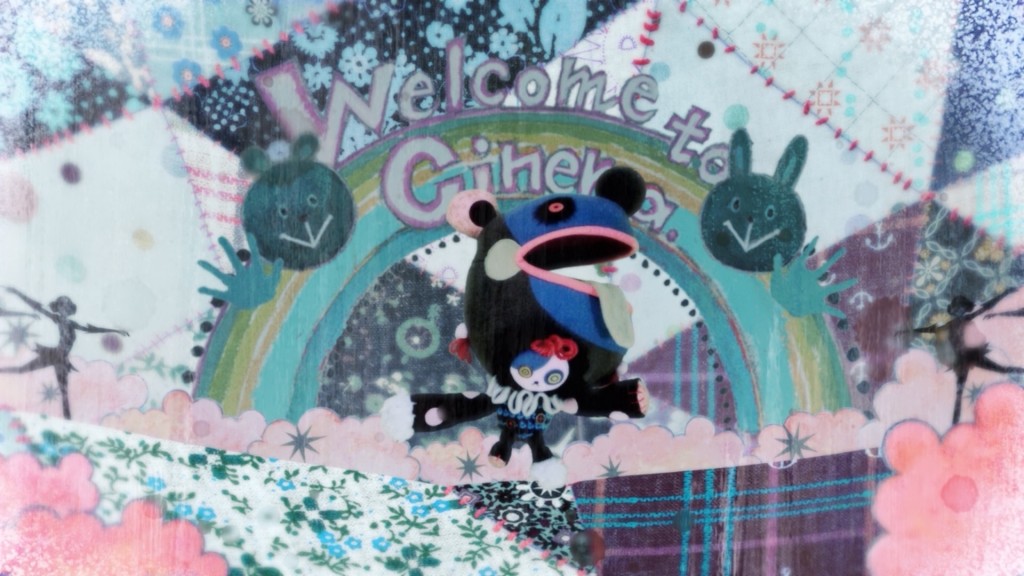
Hard to grasp is perhaps the right phrase to use, as the opening third of the film is very much the opposite of what we’ve come to expect based on the story so far, and at times feels like a complete reboot rather than a continuation. The wraiths of the remodelled world are long gone and are replaced by creatures known as Nightmares – the manifestations of peoples’ dark dreams. Enter our team of magical girls, whose job it is to defeat the Nightmare in order to calm the person having the dream and to keep the magic in their soul gems alive. Despite having become a goddess and entered a higher plane of existence, Madoka returns with her rose bow, backed by Tomoe Mami, Miki Sayaka, Sakura Kyouko, and our mysterious transfer student Akemi Homura, all seemingly best chums and fighting for a common goal.
While the TV series was very much a deconstruction of the magical girl genre, this third takes a satirical view on “what if Puella Magi Madoka Magica was your typical magical girl show?” What you get is something that does exactly what it says on the tin, as we are presented with the five girls valiantly teaming up to fight against the evil which threatens the peace of the world. It’s all cutesy and literally sugary sweet, as the girls transform with new dancing sequences, defeat the bad guys and head on home for tea and cake. They even have their own mascots, with Kyubey reduced to a ball of fluff that goes “Kyuu!” and the reappearance of the infamous sweets witch Charlotte as the renamed cheese loving Bebe.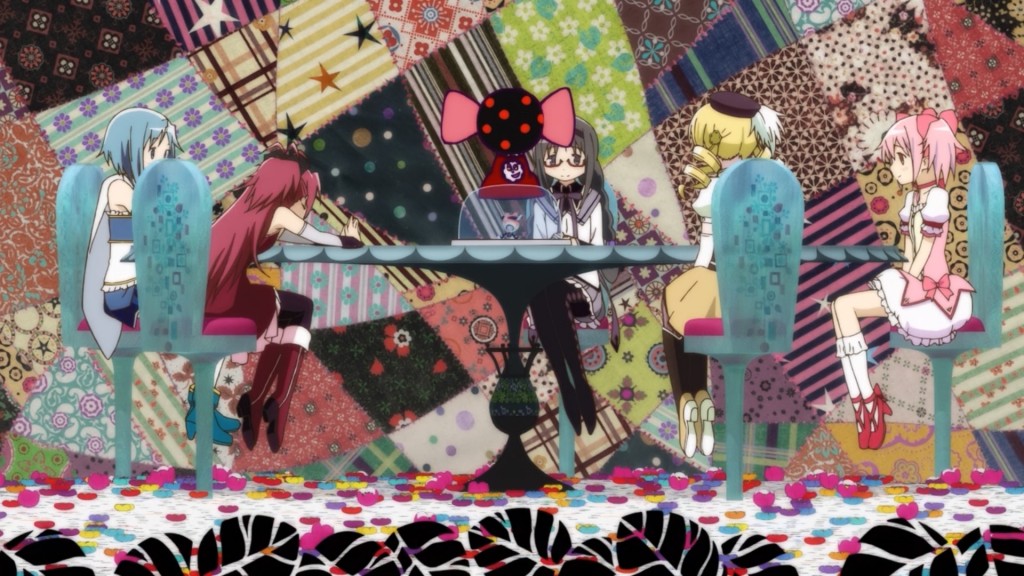
The whole point of this sequence is to shout in your face that something is clearly wrong, but keeps doing so like that annoying friend who won’t stop talking to you about that exact same topic. If you’re a keen follower of the franchise it’s immediately evident, and while seeing all of the girls in action is cool, the joke quickly wears thin.
Despite this, Shaft are still determined to make every moment worth watching with the most beautiful realisation of the franchise’s art style yet. The cardboard cut-out Nightmare worlds seemingly pop out of the screen, backdrops of Mitakihara City are mystical and otherworldly, and the girls’ magic is emphasised by the bright, bold colours. The Nightmares are perhaps the greatest achievement in this area, as they are brought to life by using a real life plush toy prop. The stop-motion effect makes them that little bit creepier and distinguishes them from the already established foes.
Finally, we leave behind the cute and enter the second third of the film, where writer Urobuchi Gen takes us back into the dark themes that were so prevalent in the main series and made the franchise what it is today. At long last, Homura realises that all is not right with the world and her doubt, fear and suspicion provides us with some amazing set pieces, including one frenzied battle that has been a long time coming. It’s easy to confuse this section with a failed attempt at misdirection, as the core of this third isn’t as clear as it needs to be. Instead, this is an attempt at moulding and rationalising the key characters towards the decisions that are made in the ending. The foreshadowing is sparsely there, but we know these characters so well that making it any more obvious would have seemed far too strange and alarming.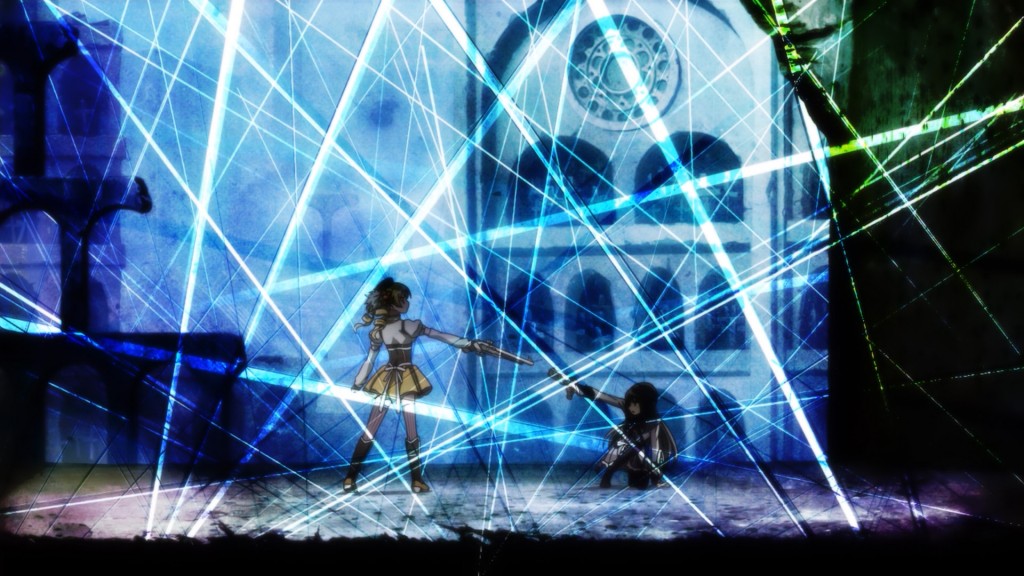
As such it’s a testament to Urobuchi’s planning and knowledge of his own world and characters that he doesn’t take this step in pushing things too far. The emotional changes are presented and flow naturally as Homura begins to reject the world around her and raises suspicion at what shouldn’t be. It’s Homura’s part of the story that has always been the show’s greatest strength as it uses the meaning of Homura and Madoka’s relationship to link everything in the plot together.
To do that, that means getting Kyubey and the rest of the Incubators involved as antagonists, and they return in a way that makes them seem even more abhorrent than they ever were before. Now that Homura has told them of the witches, the Incubators realise how much more efficient the old system was in retrieving energy from the transition from hope to despair. As ever an evil scientist would do, they hatch a plan to return to the old world, which we can see is going to drive both the plot and Homura herself to the very edge. This ends up in a hectic final battle, as Homura turns witch just to stop the Incubators’ plan, while the rest of the cast take up arms in order to save her. If there was anything missing from the main series that fans were yearning for, this would be it. It’s a whirlwind sequence that feels like you’re witnessing the final end to Homura’s arc; and from the turning point at the beginning of the third to the final sigh at the end of it you feel all of the threads connecting.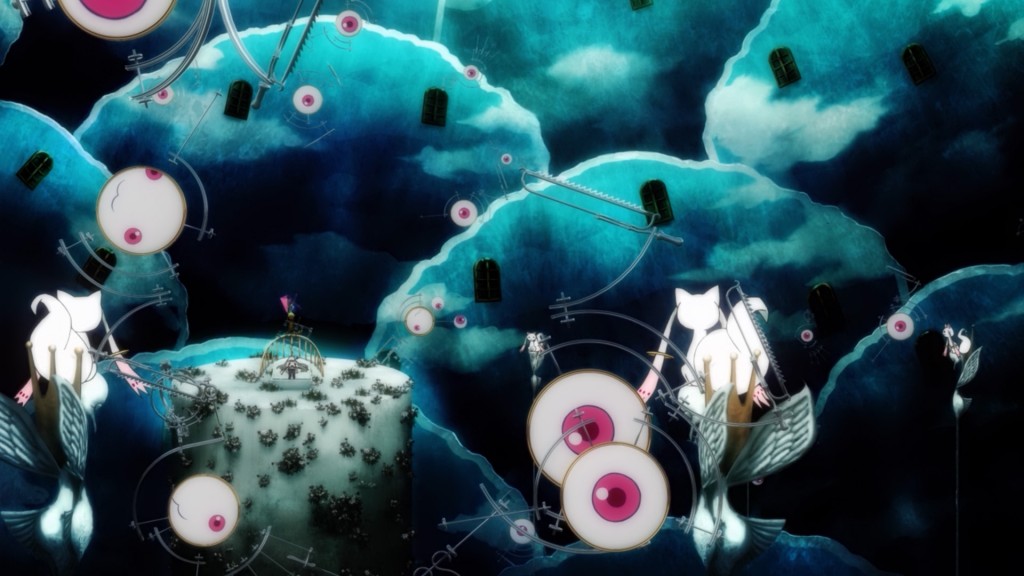
What comes after though is not afraid to say no to a good ending. As the wind dies down and Madoka’s light descends, Shaft begins to plot and plan ahead. “What if,” they say, “You could rewrite the universe in an act of selfish love and be with whoever you wanted to, forever?”
And as Madoka’s hand reaches for Homura’s soul that’s exactly what happens. As a result of both her initial wish, her torment at being left behind, and the subsequent plans and experiments of the Incubators, Homura has been left feeling a little peeved at the whole thing and decides to take matters into her own hands. Instead of taking her salvation, Homura declares her love for Madoka and steals some of her power in order to create a perfect world where Madoka’s happiness is secure and in which the pair will never be separated.
It’s a surprise ending yet cruel as it rewrites everything we know about the franchise and seemingly blows Homura’s good-natured character beyond the edges of time and space; tantalisingly wetting your lips for more. It feels like this is exactly what the film was designed to do, allowing a new route of exploration into Madoka’s world. Should we be satisfied at that? For the diehard fans it’s a heart-rending tease, but for those who haven’t really caught on to this franchise, it’s weak and unsatisfying that there’s no definite conclusion.
Just from reading the face of it, it sounds a pretty ridiculous scheme to keep the franchise going, and rumour has it that Urobuchi had actually planned for Madoka to save Homura’s soul. Such speculation has been fuelled by the division created by the twist, as they try to throw in something totally unexpected, perhaps even in order to create such a discussion. Homura’s turn of character seems so outlandish and out of character due to the movie sticking too close to the original interpretations of the characters in certain sequences, “tricking” us to believe that everything is alright when it really isn’t. The flower scene where Madoka comforts Homura and the scene in which the two team up to escape from the witch world are the main culprits, as it leads us to believe that Homura has accepted Madoka’s salvation, when in reality she wants Madoka to live an ordinary life where neither of them has to be alone.
It’s difficult to understand, but it becomes easier with repeated viewings, as like in the original series doing so reveals more about the story. There’s small hints in the prologue sequence that actually turns out to reveal the entire plot; and the opening animation reveals Homura’s devil form in her shadow. Her rash actions in the second third could be described as panic and denial if they were presented to a greater degree, and a darker perspective could have been offered if they had changed the closing tone of Homura’s meeting with Madoka.
Looking even deeper you get an overall storyline across the TV series and movie that is akin to elements of Christianity, and you see a lot of visual and metaphoric imagery evoking this. Madoka is depicted as a messiah who offered her own life to save those of others, while this new devil version of Homura is a fallen angel. There’s also the cemetery sequence in the second film, and Rebellion features the insertion of cross motifs and medieval witch burnings. If you look at it this way, Homura’s fall into darkness becomes a lot more believable within the main canon of the story, although this isn’t something that someone viewing for the first time is going to necessarily get.
So while these repeated viewings do suggest that perhaps this was where the story was headed to all along, it could have been handled in a way which flowed throughout the film, making Homura’s character switch more believable and easier to adjust to.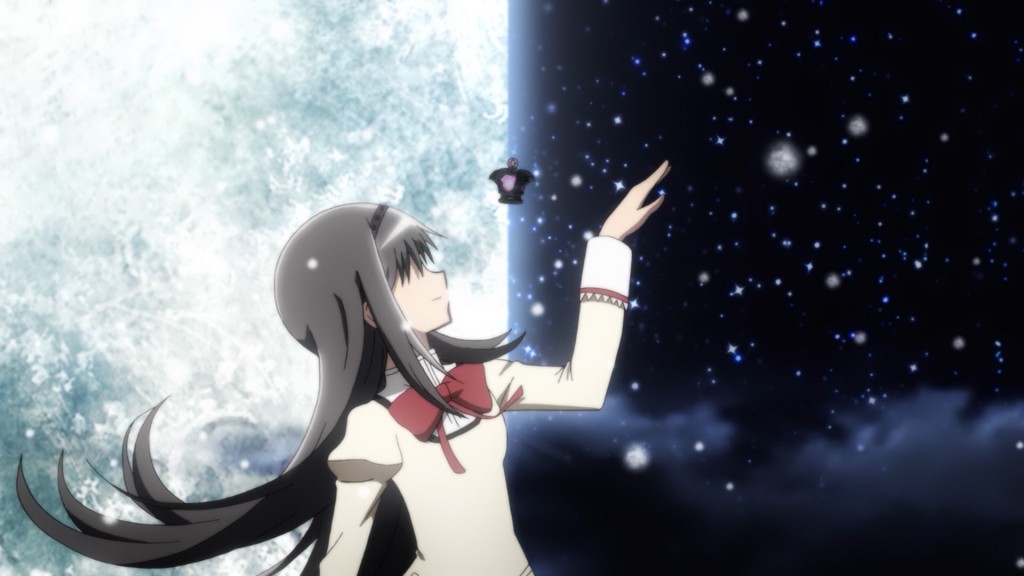
And that’s not to say Rebellion is a bad film: it really isn’t. It’s a beautiful piece of animation that continues to play with and stay true to the franchise’s main themes and for the majority of its running time produces an entertaining piece of storytelling. It should be applauded for creating new content for the main arc of a franchise that had already seemed to have run its course, despite its jarring ending. It can be considered a cash-grab, but if so it’s a damn fine one that allows viewers to decide for themselves where the series truly ends. While taking this approach dams up the flow of interest from those who aren’t hardcore fans, those who are will be left clamouring for more.
8/10 – Very Good
Extras
On the movie disc you get the standard textless opening and ending. The collector’s edition contains an unsubtitled extra disc with an additional version of the film with a different Japanese dub track for Homura, along with a feature that recaps the story of the franchise with clips and interviews during the Japanese theatrical release, a series of crossover pre-movie shorts featuring characters from the Monogatari series (also animated by Shaft), and trailers for Rebellion. You’ll also find a soundtrack disc and a booklet containing production material and staff interviews. The international edition translates these and sticks them in a separate booklet, which is not present in the Japanese edition.
